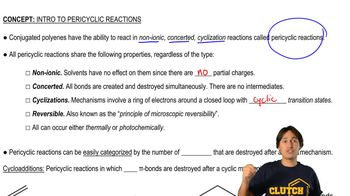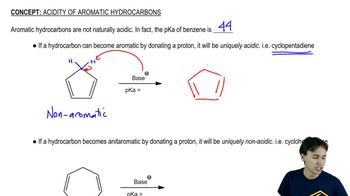c. Under photochemical conditions, will ring closure be conrotatory or disrotatory?
d. Will the product have the cis or the trans configuration?

 Verified step by step guidance
Verified step by step guidance Verified video answer for a similar problem:
Verified video answer for a similar problem:



 4:49m
4:49mMaster MO Theory of Photochemical Electrocyclics with a bite sized video explanation from Johnny
Start learning